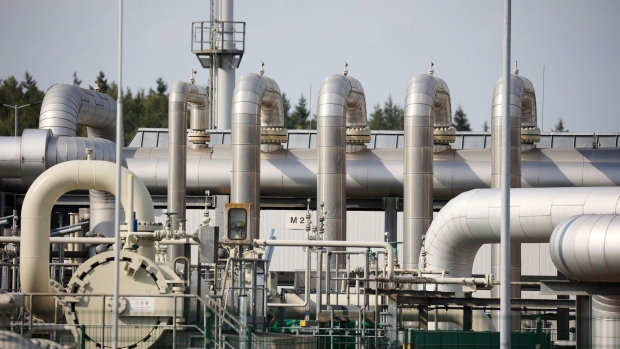Nov 22, 2022
EU Eyes Gas Price Cap to Avoid Abnormal Spikes Seen in August
, Bloomberg News

(Bloomberg) -- The European Commission proposed an emergency brake on natural gas prices way above current levels, as it seeks to contain the economic damage from Russia’s tightening squeeze on energy supplies.
After months of wrangling and divisions within the bloc, the commission proposed a cap level of €275 per megawatt-hour. It’s well above current levels of about €120, raising the question of whether it will ever be used.
It will only be activated if strict conditions are met -- an apparent attempt to see off opposition from countries that have long opposed any cap on market prices because of the risk it may make it harder to secure gas from new suppliers.
“It is not a silver bullet but a powerful tool we can use when needed,” Energy Commissioner Kadri Simson told reporters.
The proposal still needs approval from national governments but comes after months of lobbying by some member states to act to rein in energy costs that have been ruinous for swathes of the European economy. While prices have eased in recent weeks, Moscow threatened on Tuesday to further squeeze gas flows to Europe, raising the prospect of another spike in prices.
Hard to Trigger
The tool will only be used if futures on the Dutch Title Transfer facility exceed €275 for two weeks and the gap between TTF and liquefied natural gas prices is greater than €58 for 10 trading days.
Even at the height of the crisis in the summer, the price didn’t stay above that level for two weeks, suggesting the tool would not have been activated had it been in place then. That led several market watchers to question how powerful can will actually be. Gas prices ended the day higher.
“The proposal does not stack up either economically or politically. It might win over a few countries, but does not address the concerns that are driving the call from more than half of EU countries for a price cap,” said Simone Tagliapietra of the Bruegel think tank.
The EU’s Simson said the mechanism was designed with the idea that “extreme” situations seen earlier this year “might come back.”
Traders and policy makers are on tenterhooks to see if Russia will completely cut off its last remaining gas pipeline flows to western Europe via Ukraine. It said on Tuesday it would curb supplies further from next week over a spat about flows to Moldova.
While Europe has filled its gas stores and mild weather has made the fall easier than feared, the continent now faces the prospect of having to fill up its storage for next winter without any Russian gas at all. The focus is now shifting to next year.
Slow Start
Europe has been split on how to tackle the crisis and has struggled to come up with measures all members can get behind. As the bloc hesitated, Germany moved ahead with its own program to cushion consumers, angering neighbors who called for a united approach.
The EU has already moved to curb demand -- with mostly voluntary targets -- and has designed measures so that governments can use windfall taxes on companies to ease the burden on households. But it had so far failed to implement any kind of cap despite months of summits and negotiations.
Nations led by Italy, Poland, Greece and Belgium demanded action by the commission before a decision on a broader package to rein in soaring gas prices scheduled for Thursday. The bloc’s heads of government last month unanimously called on the executive to propose measures including a temporary “dynamic price corridor” on gas transactions.
The commission -- which drafts legislation in the bloc -- has been aware of the risks that capping prices might pose to the security of supply, just as nations are seeking to replace Russian gas with other sources. Germany has also voiced such concerns.
The proposal is set to be first discussed by energy ministers at their emergency meeting in Brussels on Thursday. National governments have the right to propose amendments to the regulation.
(adds comment)
©2022 Bloomberg L.P.






